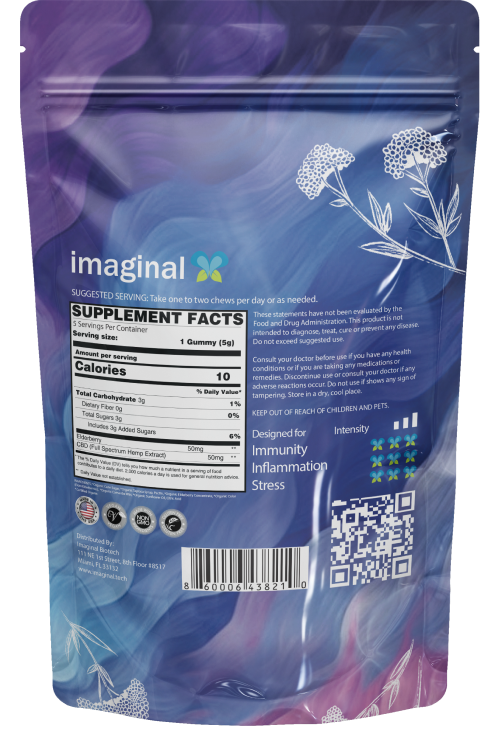If you asked most people how many compounds there are in the cannabis plant, they might say two; THC and CBD. These two are the most popular cannabis compounds, and they are the ones most people are familiar with. However, they are not the only compounds in the hemp plant.

When you mention these two, you are barely scratching the surface. Most people would be shocked to learn that researchers have identified more than 480 distinct compounds in the cannabis plant. These compounds fall into several different groups, such as terpenoids, cannabinoids, and flavonoids.
Each of these compounds has something unique about it:
- Terpenoids- are the most structurally diverse and abundant natural products found in plants.
- Flavonoids- are a diverse group of plant chemicals found in most fruits and vegetables.
- Cannabinoids- are the subject of this article.
What are cannabinoids?
The term cannabinoid refers to any compound that belongs to a group of more than 100 compounds first identified in the cannabis plant. Initially, the term only referred to compounds identified in the cannabis plant. However, as our understanding of cannabinoids grew, it broadened to encompass compounds, not in the cannabis plant.
To make it easier to study cannabinoids, researchers divided them into three groups. The presence of a compound in a group depends on how or where it was produced.
The groups of cannabinoids are:
- Phytocannabinoids
- Endocannabinoids
- Synthetic cannabinoids
Let’s look at each of them.
What are phytocannabinoids?
Phyto is a word derived from Ancient Greek that means a plant. Therefore, phytocannabinoids are cannabinoids that are produced by plants. The traditional understanding of phytocannabinoids is that only the cannabis plant produces them. However, this couldn't be further from the truth.
Plants outside the cannabis family can also produce Phytocannabinoids.
Cannabis-derived phytocannabinoids
The most famous phytocannabinoids, and cannabinoids in general, are the ones that are derived from the hemp plant. This is because they are the compounds responsible for some of the best-known effects of the plant.
Scientists have managed to isolate more than 100 unique phytocannabinoids from the cannabis plant, and some of these include:
- THC (tetrahydrocannabinol)
- CBD (Cannabidiol)
- CBL (cannabicyclol)
- CBV (cannabivarin)
Each of these cannabinoids has something that makes them unique, but they also have a lot in common with other cannabis-derived phytocannabinoids.
Production of phytocannabinoids in cannabis
To understand how phytocannabinoids are produced in the cannabis plant, we first have to understand trichomes.

Trichomes are tiny protrusions on a plant that are mushroom-like in appearance. They perform a wide array of functions, such as aiding some carnivorous plants in catching prey.
There are three types of trichomes on the cannabis plant; these are:
- Bulbous trichomes
- Capitate sessile trichomes
- Capitate-stalked trichomes
Trichomes are essential to the cannabis plant because they protect it from animals, damaging winds, and some types of fungi.
Apart from their protective role, trichomes, particularly capitate-stalked trichomes, are responsible for the formation of cannabinoids. The production of cannabinoids in the hemp plant begins when the plant is near its bloom phase, the period when it produces flowers.
As flowers begin to form on the hemp plant, trichomes form on the plant's outer surface—the trichomes transport plastids and vacuoles from their stalk to their gland head. The cells in the gland head then start to metabolize and produce the precursors to the cannabinoids.
These precursors are acidic and include CBDA, THCA, and CBCA. To produce cannabinoids from these acidic precursors, one of two things has to happen, either decarboxylation or degradation.
Decarboxylation is the process by which most cannabis-derived phytocannabinoids are formed. Decarboxylation involves heating the precursor and removing a carboxyl group from it. Cannabinoids that are produced in this way include THC, CBD, and CBG.
Degradation occurs when a precursor such as THCA or CBCA is exposed to elevated temperatures over an extended period. The precursor first undergoes decarboxylation, and then it degrades to produce the final cannabinoid. Phytocannabinoids produced as a result of degradation include:
- CBN (cannabinol)- created after the degradation of THCA
- CBL(Cannabicyclol)- produced after the degradation of CBCA.

What determines the phytocannabinoid profile of a cannabis plant?
Its genetics and the environment primarily determine the phytocannabinoid profile of a cannabis plant. This means that some plants will have a higher quantity of one cannabinoid than others.
Most commercial cannabis plants are bred to have a high concentration of THC or CBD depending on the requirements of the company.
What are the uses of cannabis-derived phytocannabinoids?
Cannabis-derived phytocannabinoids have a variety of uses, and these include:
- CBD- used in the production of Epidiolex, an FDA approved drug for the treatment of seizures.

- THC- is used in the production of Nabiximols, a drug approved in the UK for the alleviation of neuropathic pain
Non-cannabis derived phytocannabinoids
As we mentioned previously, cannabinoids are present in other plants apart from the hemp plant. Some of the species where cannabinoids have been discovered include
- Echinacea purpurea- more commonly referred to as the purple coneflower

-
Echinacea angustifolia- more widely known as the narrow-leaved purple coneflower

- Radula marginata- a type of liverworts native to New Zealand.
The phytocannabinoids found in these plants vary depending on the species of plant. And in some cases, they bear a similarity to the cannabinoids found in the hemp plant.
For example, scientists have identified that Radula marginata contains the phytocannabinoid perrottetinene. Perrottetinene is structurally similar to THC and produces a comparable psychoactive effect.
Another well-known phytocannabinoid that is not derived from the cannabis plant is lipophilic alkamides, which is found in Echinacea species.
What are endocannabinoids?
Endo is a word derived from Ancient Greek that means within or inner. When it’s used, it typically refers to substances originating or produced within the human body. Therefore, endocannabinoids are cannabinoids produced within the body.
Yes, you read that right. The human body produces cannabinoids. It turns out we have more in common with the cannabis plant than most people realized.
Scientists have identified several endocannabinoids such as
- Arachidonoylethanolamine
- 2-Arachidonoylglycerol
- 2-Arachidonyl glyceryl ether
- N-Arachidonoyl dopamine
- Lysophosphatidylinositol
What are the functions of endocannabinoids?
The primary function of endocannabinoids is to act as intercellular lipid messengers. What this means is that the endocannabinoids are signaling molecules that are released from one cell and activate cannabinoid receptors on nearby cells.
Because of the role they play in intracellular signaling, some might assume that endocannabinoids are similar to monoamine neurotransmitters. However, this couldn't be further from the truth. Endocannabinoids are different from monoamine neurotransmitters in several ways, such as:
- Endocannabinoids are used in retrograde signaling, while monoamine neurotransmitters are not. Retrograde signaling is a phenomenon whereby a neurotransmitter is released from the postsynaptic cell and has an effect on the presynaptic cell. Monoamine neurotransmitters are released by the presynaptic cells and act on the postsynaptic cells.
- Endocannabinoids are not very soluble in water but are soluble in oils.
- Endocannabinoids are not stored in vesicles and are believed to be synthesized on demand instead of being produced and stored for later use.
Synthetic cannabinoids
The final group of cannabinoids is synthetic cannabinoids. These are human made cannabinoids that are produced in a lab.
The production of synthetic cannabinoids dates back to the middle of the 20th century when scientists such as Roger Adams worked on producing these compounds. At the time, the scientists focused on synthesizing cannabinoids that were structurally similar to cannabis-derived phytocannabinoids. However, in the present day, synthetic cannabinoids are no longer based on cannabis-derived phytocannabinoids.
Synthetic cannabinoids are very popular in the scientific community because they are useful in experiments. They can be used to do several things, such as determining if there is a relationship between the activity and the structure of cannabinoids.
Some of the most well-known synthetic cannabinoids are:
- Nabilone- a schedule 2 substance that is used as an adjunct analgesic for pain.
- JWH-018- a potent cannabinoid agonist sold in legal smoke blends known as spice.
- HU-210- believed to be between 100 to 800 times as potent as THC.
How do cannabinoids interact with the body?
Now that we are done with the individual categories let's dive into their interaction with the body.
Cannabinoids interact with the body through the Endocannabinoid System (ECS). The ECS is a system made up of enzymes, receptors, and endocannabinoids that plays a huge role in the body. When cannabinoids bind to these receptors, they produce varying results depending on several factors, such as the type of cannabinoid and the location of the receptor.
We did a pretty intensive dive into the ECS, and you can find it on our blog.
Final thoughts on cannabinoids
Cannabis is a plant with many secrets that we are yet to fully unravel. In the 1940s, no one could have guessed that by 2020 more than 100 different cannabinoids would have been discovered. No one could have guessed that one of these cannabinoids, CBD, would become a global phenomenon.
No one knows what the next 80 years have in store for cannabis. What we do know is that broadening our understanding of cannabinoids will not only improve our knowledge of hemp but also our understanding of ourselves.





